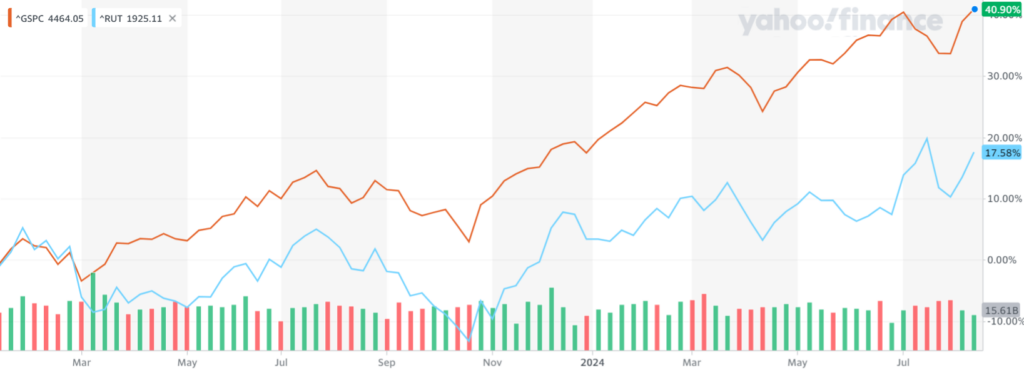Zinger Key Points
- The equity market has been on a tear since 2023 despite the Fed's successive and aggressive rate hikes.
- The expectation is when the rate cut finally comes, small-caps that have underperformed will join in, accelerating the rally's momentum.
- The new Benzinga Rankings show you exactly how stocks stack up—scoring them across five key factors that matter most to investors. Every day, one stock rises to the top. Which one is leading today?
The string of weak data and the continued improvement in pricing pressure have prompted the Federal Reserve to do away with its hawkish tone and signal that a rate cut may be imminent. Come September, most market strategists see the central bank beginning to reverse its rate hikes and the rally broadening out.
A charting specialist and YouTuber drew upon history to suggest that the market may not fare well in the months following a rate cut.
What Happened: The first rate cut following the economic weakness that was evident after the dot-com bubble burst was implemented on Jan. 3, 2001. The central bank reasoned then that the rate cut announced at an unscheduled meeting, would help to alleviate weakening sales and production and that it was done in the context of lower consumer confidence, tight conditions in some segments of the financial markets and high energy prices, which impacted household and business purchasing power.
A chart shared by @ChartingProdigy showed the S&P 500 saw a 3.5-week bounce following this rate cut. The upward bounce came after the market topped and then dropped by about 19.53%. The rate cut officially triggered a bear market, with the index dropping about 51% from the top and 44.50% after the bounce that followed the rate cut.
See Also: Top Performing Small Cap Stocks
When the Fed cut rates by 50 basis points in Sept. 2007 in an effort to prevent an aggravation in the housing market collapse, the market had a similar 3.5-week bounce. After the Sept. 18, 2007 rate cut, the S&P 500 topped 3.5 weeks later. After the completion of a double-top formation, the index plummeted by over 20%. From the Fed pivot point, the index slumped 57.77%, falling deep into correction territory.
Why It’s Important: Unlike in the previous two rate-cut cycles that preceded the post-COVID-19 pandemic cuts, the economic conditions, though slackening, are not pointing to a “fall-off-the-cliff” scenario. The job market has shown signs of weakness with the downward annual revision but has not contracted and consumers continued to spend despite the rising inflation, which ate away into real income.
The market has been on a scintillating rally since 2023 after the downturn in the previous week, with mega-cap stocks responsible for much of the upside.
Small-caps have lagged behind their bigger peers amid the higher interest rate environment. As inflation went past 9% in the summer of 2022, the Fed began to raise interest rates beginning in March 2023. Small-cap companies are reliant on loans as a source of financing, and higher interest rates increase their interest rate servicing costs and also make credit terms tough to avail loans.

Source: Yahoo Finance
A relief rally could come if the Fed chooses to lower rates at the Sept. 170-18 Federal Open Market Committee meeting and how long the momentum will persist is a moot point.
The SPDR S&P 500 ETF Trust SPY, an exchange-traded fund that tracks the S&P 500 Index, has added 19% for the year-to-date period. On Friday, the ETF climbed 1.06% to $562.13, according to Benzinga Pro data.
Read Next:
Image Via Shutterstock
Edge Rankings
Price Trend
© 2025 Benzinga.com. Benzinga does not provide investment advice. All rights reserved.
Trade confidently with insights and alerts from analyst ratings, free reports and breaking news that affects the stocks you care about.